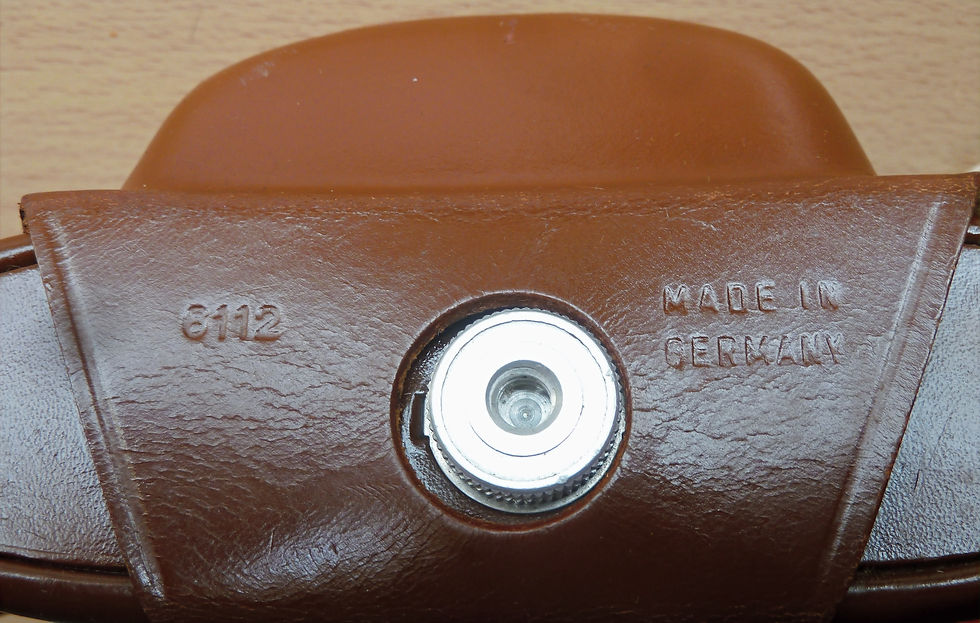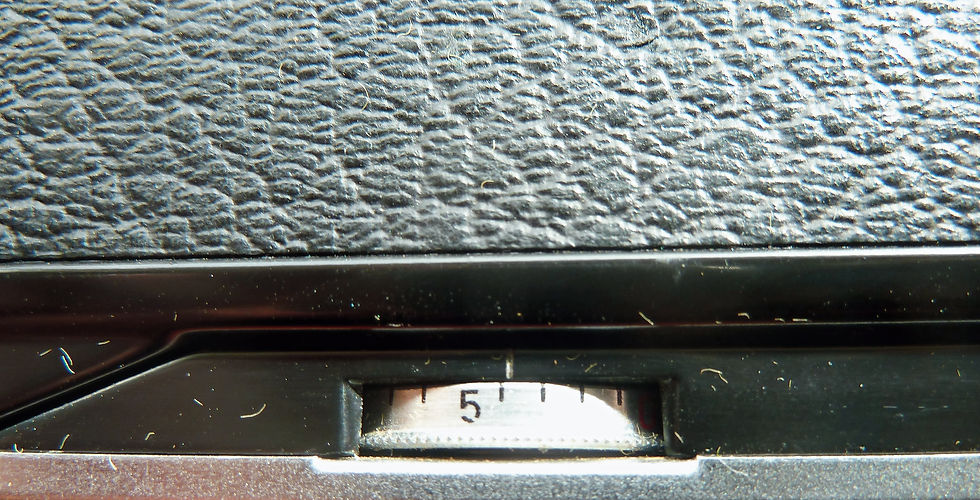Agfa Optima II Prontormator
- Kamera Ostalgie

- Oct 8
- 4 min read
As the 1960's swung into action, Agfa were right on cue, with this smart up to date Automatic 35mm camera. It was just right for the start of the new decade, stylish, smart and for the time fully automatic, it was a big hit, and sold well.

Produced from 1960 until 1964 the Optima II arrived just as the vogue for automatic and semi automatic cameras was getting into full swing. We often overlook these types of cameras today, just as we did thirty years ago when they were often in cardboard boxes under dealers stalls with all the cheap non classic stuff. What fools we were with hindsight, this was under my stall for years with its price tag of £10, it still has the tag on it today, but am I glad I never found a customer for it!

Even today, with the cameras at 60 or so years of age, they still only command an 8 to 20 pound price tag, at least here in the U.K. We really should appreciate these early 60's cameras more, they are truly classics!
So lets see what the Agfa boys from Munich produced for us at the start of the swinging sixties.

The lens is a 45mm 2.8 Color Apotar, the shutter they have called Prontormator. There are no shutter speeds or apertures visible on the camera as everything is automatic exposure wise! However in the camera specifications the shutter ranges from 1/30th to 1/250th of a second, you just don't really know what speed you are taking your image at, as the camera picks everything for you!

Yes, I'm sure a lot of photographers won't like that lack of control, however it was aimed at
people who just wanted to take a good picture with as little input from themselves as possible, so as far as that goes the camera delivers, as all you do, is select your focus range from the three available, then press the shutter part way, there is a little circular disk at the top of your viewfinder, if it is green you just press fully down and take your photo, if it's red then there is not enough light so you can't. Simple. You know I can't wait to try this Optima out, see if it still delivers 60 years on.

The three focus zones are 'close ups' marked by the head and shoulders image on the lens surround, this gives a range from 5 feet to 7 feet 5 inches, the second zone is marked by a group of people, and ranges from 7 feet 5 inches to 15 feet, the third group marked by a church with mountains behind, very Bavarian, it ranges from 15 feet to infinity. All nice and simple.


Lets have a look at the original case. I'm starting to look at cases in more detail here at Kamera Ostalgie because they are a big part of the camera, so very much worth looking at.


Look at these alloy caps to mount the carry strap. No more straps tearing away from the leather with these, this is a quality addition to the case. Great design.


Lets have a little look at the history of the Agfa Optima II. The first of the series came out in 1959, just called the Optima, it was very similar, but had the shutter release button on the opposite side to the Optima II
Then came the Optima I where the shutter release changed sides. The lens changed to the lower spec Agnar lens.
Next in typical German style came the Optima Ia, still with the cheaper Agnar lens but with an updated viewfinder.
Which brings us back to the Optima II when the Color-Apotar made its return!
Lets have a quick look at some of the other features of the Optima II

I really like the viewfinder on this Optima, large, clear and with a suspended white frame, you can even still see all corners of the image wearing specs, which is a bonus for me.

Flick the little circular disc & the re-wind knob pops up. It also doubles up as a film type reminder which is good.

The body number on this particular example is EC 5517. The camera is quite heavy it weighs in at 720g. But it is quite a tall camera. The shape of it combined with the weight makes it difficult to hold the camera firmly and comfortably, it really needs to be attached to its lower half of the case with the neck strap taking some of the weight.


The film counter is in an unusual place, but it is nice and clear and can even be seen when the camera is in its case.



This is maybe the only feature I'm not so keen on, the fact you really need a coin or similar object to change the film speed. I think it will be kept on 200ASA while I use it.

Well this really is a great looking little camera, I can't wait to try it out with a colour print film and see what I get! I'm off into Hippo in Burnley this week to get some film, lets see what it can do! If only they produced it with a rangefinder, no need for a Leica then!

Wait a moment they did! I have seen them on e-Bay! Aaargh they exported them all to
the USA !!! None even sold in the home market Germany! Let alone Great Britain. Why Agfa boys did you do that! Why, it should have been a world beater!
Hope you enjoyed the post,
take care,
Phil



